Research Results
Temporal resolution of 100 million frames per second has been achieved.
Ultra-high speed camera that captures "flying light"FY2019
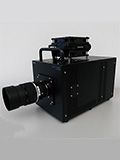
- ASTRODESIGN, Inc. / Takeharu Etoh(Visiting Professor, College of science and engineering, Ritsumeikan University)
- Adaptable and Seamless Technology Transfer Program through Target-driven R&D (A-STEP)
- Full-scale R&D stage, Practical Development (by SME Start-up) “Multi-framing camera using 100Mfps high-speed image sensor” Developing and implementing Company/Representative Researcher (2013-2017)
Improved performance through continuous trial and error
ASTRODESIGN, Inc., a company that develops A-STEP, and the supervising researcher and a visiting professor, Takeharu Etoh (previously a professor at Kindai University) developed a ultra-high speed high-sensitivity camera that is able to take 10 images continuously using an image sensor, with temporal resolution of 100 million frames per second (10 nanosecond). The camera was evaluated at Kindai University equipped with a measurement device, and images were taken with pulsed laser in a laboratory filled with fog and darkness. It successfully captured flying light: the first as a camera with an image-sensor.
An image sensor is a semiconductor that converts light that entered through a lens to electrical signals. This new sensor converts almost 100% of light that enters in each pixel, and records five to 10 images continuously. Furthermore, the transmission method from the sensor to an external memory was improved, and the optimum structure to guide electrons converted from incident light was identified. As such, performance was improved through trial and error.
ASTRODESIGN, Inc., the company that developed the camera, has been developing broadcast equipment and image processing devices for a long time, and their advanced technology is highly reputable. In this study, we utilized their technological skills to tackle the topic of “observing flying light”.
If cameras with an image sensor are developed further, we will be able to view ultra-high speed phenomena that could not be observed before, and contribute to revolutionary and cutting edge measurement technologies. Many researchers are interested in capturing flying light, and there have been examples of images taken with special technologies; however, there has not been any example of continuous imaging with a camera with an image sensor.
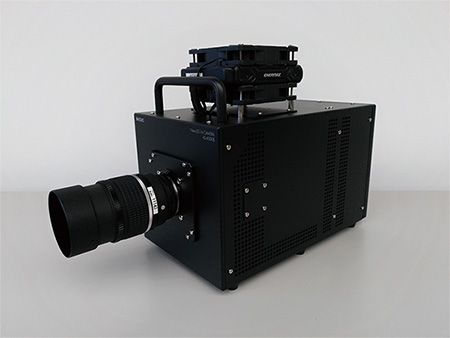
1Ultra-high speed video camera that enabled 1/100 million second imaging.
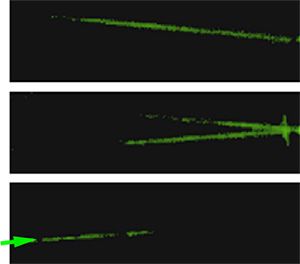
Three out of 10 continuous images of flying light. In 10 nanoseconds, light moves 3 meters. Since 10 images are continuously captured, the light path longer than 30 meters was prepared, and the light reflected in the mirrors placed face-to-face was captured.
Breaking the world record
Professor Etoh developed a video camera with groundbreaking speed of 4,500 frames/second while at Kinki University in 1991. The film in a conventional camera was replaced by an image sensor, and the shutter was changed to an electronic system. In this manner, the performance was drastically improved, and the video camera became commercialized. Professor Etoh achieved 1 million frames/second in 2001, breaking world record in imaging speed of video cameras.
Presently, the performance of image sensors for video cameras is determined by light sensitivity, spatial resolution that indicates details in the image, and temporal resolution that indicates how short of a time frame can be captured. Sensitivity and spatial resolution are near theoretical limits, but there is a room for temporal resolution to be improved.
Design and simulation over and over
During the research, when we try to increase the imaging speed of the camera, the amount of light that enters the camera will decrease in inverse proportion; therefore, balance of sensitivity and temporal resolution was desired. Professor Etoh proposed a unique back-illuminated image sensor. Usually, on the surface of the image sensor, we have an element to capture light and a complex circuit. This circuit sometimes blocked light; thus, it was designed so that the light was collected to the center of a pixel from the back where there is no circuit.
However, even if the image sensor captured light, it took time to transmit the image information to the memory. This made improvement in temporal resolution difficult. An idea to solve this problem was to divide a pixel in the sensor into six. This is similar to taking images faster than conventional video camera by lining up six cameras with fast shutter speed. If six electrodes are prepared, information for six images can be recorded. If six electrodes are placed at the center of the surface of an image sensor like petals of a flower, electrons converted from the incident light enters into six electrodes in consecutively.
After imaging, information of multiple images is combined and transmitted to the memory outside the sensor. This drastically improved temporal resolution. In 26 years since the birth of a camera with a speed of 1/4,500, temporal resolution dramatically improved by 22000 times.
After installing this image sensor into a camera, and moved onto the development of an ultra-high speed and high-sensitivity camera, there were further challenges. With a 1/100 million second camera, it was difficult to transmit signals to control shutter without distortion by a conventional method. Device design and circuit board design were repeated, and ultimately an optimum electronic circuit could be developed. Since it was a completely new sensor, there was no guide for the control part of the image sensor, and the development was based on trial and error.
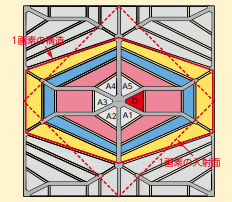
Arrangement of electrodes on the surface of the image sensor. Electrode D is used to emit unnecessary electrons, and when high voltage is applied over a short period of time from electrode A1 to A5 in that order, information of five images is gathered under each electrode.
Reducing time for mass spectrometry
The theoretical upper limit of imaging speed by the image sensor is 11.1 picosecond (1 picosecond = 1 trillionth second), and it is difficult to reach this limit. However, if it is designed according to the conditions that determine temporal resolution, it should be possible to design an ultra-high speed 50 picosecond (200 times faster) image sensor with the modern technology. A camera with an image sensor is compatible with computers, and is more convenient than other imaging technology.
An expected future application is mass spectrometry. This is a technology in which laser is focused on a point on the sample, and mass is calculated based on the speed of atoms and molecules that fly out. If an ultra-high speed camera is used, the whole surface could be irradiated, and speed of particles could be measured at once. Thus, it should be able to drastically shorten the analysis time.
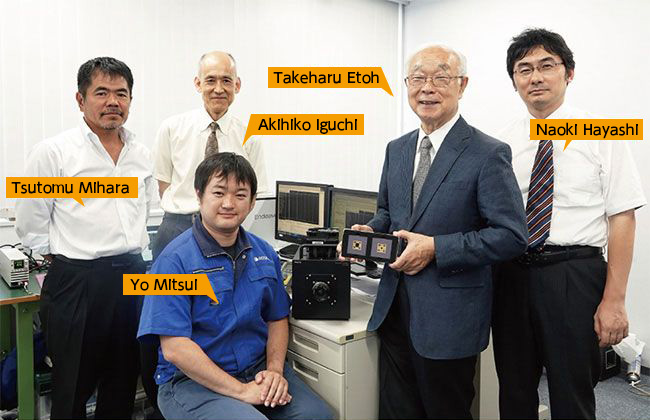
The research team that has realized an ultra-high speed video camera that captures flying light.Professor Etoh is holding an image sensor.
